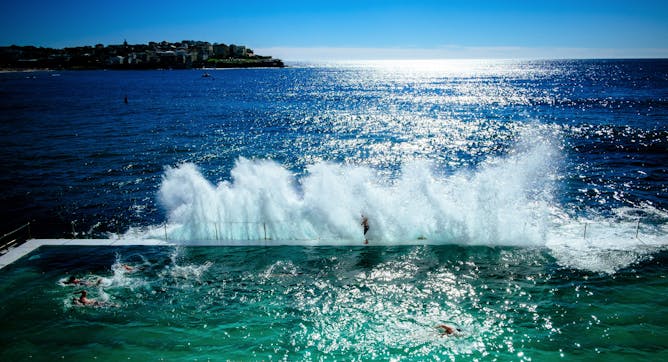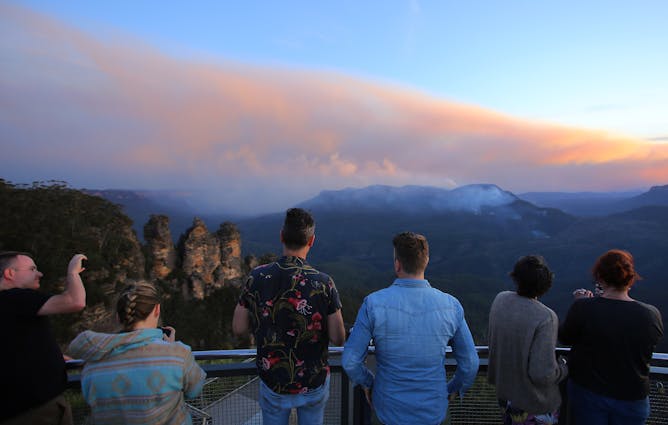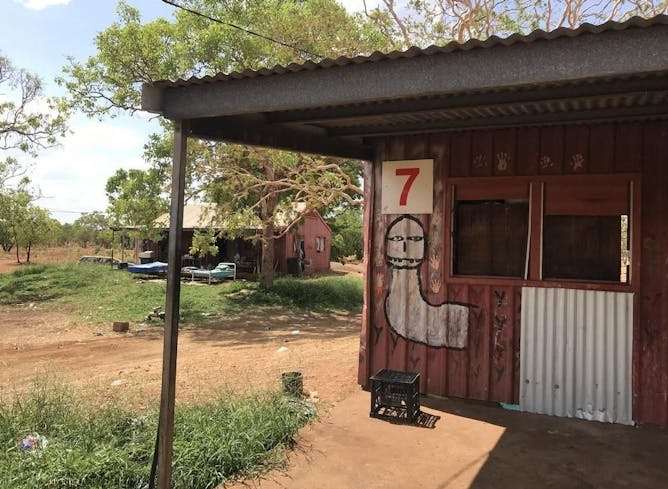|
|
|
Editor's note
|
|
New South Wales (along with South Africa) is home to more ocean pools than anywhere else. Today, in the first of a series on public pools in Australia, we look at why these beautiful ocean pools, usually carved out of the sandstone platforms found along much of the coast, are such a feature of life in NSW.
As James Carley writes, the state’s sustained 200-year love affair with the ocean pool – the first one was built in 1819 – is the result of several local factors, although that doesn’t entirely explain why they aren’t common elsewhere. It’s not the cost, as research has shown the economic and health benefits for the communities that use them, typically about $6 million a year, soon repay the investment in building and maintaining an ocean
pool.
Over the coming weeks, we will take a close look at public pools and how they came to hold such a special place in the Australian consciousness.
Why are public pools important to you? Share your pics and stories on Facebook and Twitter with the hashtag #myfavourite pool, and follow all our #myfavouritepool coverage here.
And if you’ve enjoyed The Conversation this year please donate today and help safeguard quality journalism in 2020 and beyond. The best way you can support us is by giving a monthly donation of whatever you can afford.
|
John Watson
Section Editor: Cities + Policy
|

|
|
Top stories
|

The ocean pool is a familiar sight in New South Wales – this one’s at Tamarama in Sydney’s eastern suburbs – but isn’t nearly as common elsewhere.
hopeless128/Flickr
James Carley, UNSW
New South Wales boasts many wonderful ocean pools, thanks to a combination of climate, geology, culture and prosperity. Despite concerns about costs, economic and health benefits far outweigh these.
|

At Echo Point lookout in Katoomba, NSW, people watch smoke from the Green Wattle Creek fire beyond The Three Sisters rock formation.
AAP/Steven Saphore
Cherine Fahd, University of Technology Sydney; Sara Oscar, University of Technology Sydney
Instagram bushfire images cut through our news fatigue. This developing brand of photojournalism brings authenticity and a different sense of proximity.
|

Walpiri Transient Camp, Katherine: Western medicine can’t be expected to work for disadvantaged Indigenous Australians unless housing and social disadvantage are also addressed.
Simon Quilty, Australian National University; Lisa Wood, University of Western Australia
A safe home, a working fridge and access to transport are all needed before western medicine has a chance of working in the long term. But a new way of providing care can help.
|

The Australian government’s ambition to exterminate all debt does not distinguish between ‘good debt’ and ‘bad debt’.
www.shutterstock.com
Richard Holden, UNSW
The idea there is no government fate worse than debt is misleading at best.
|
Business + Economy
|
-
Michael Lueck, Auckland University of Technology
The Boeing MAX disaster has already cost the company billions of dollars and will have ripple effects on suppliers and the wider US economy, with tens of thousands of jobs at risk.
|
|
Politics + Society
|
-
Michelle Grattan, University of Canberra
I'd hoped to keep my absence nice and private, especially from those quiet Australians fighting fires. Regrettably, despite best efforts, my press office wasn't able to keep a lid on the story.
-
Chris Wilson, University of Auckland
Widespread protests have broken out against India's Citizenship Amendment Act, which sanctions the recasting of India as a Hindu nation where minorities, especially Muslims, are second-class citizens.
-
Brendon O'Connor, University of Sydney; Daniel Cooper, Griffith University
In the Trump era, one crisis – even one as grave as impeachment – is simply replaced by another. In more tranquil times such crises may spell the end of a presidency – but not so in the age of Trump.
-
Tony Walker, La Trobe University
As British courts this week hear arguments for and against the Wikileaks founder's extradition to the US, the questions about journalism, the law and freedom of speech it raises are vital ones.
|
|
Columnists
|
|
|
| |
Featured jobs
|
|
|
| |
| |
| |
| |
| |
|
|
|
|
|
|
|